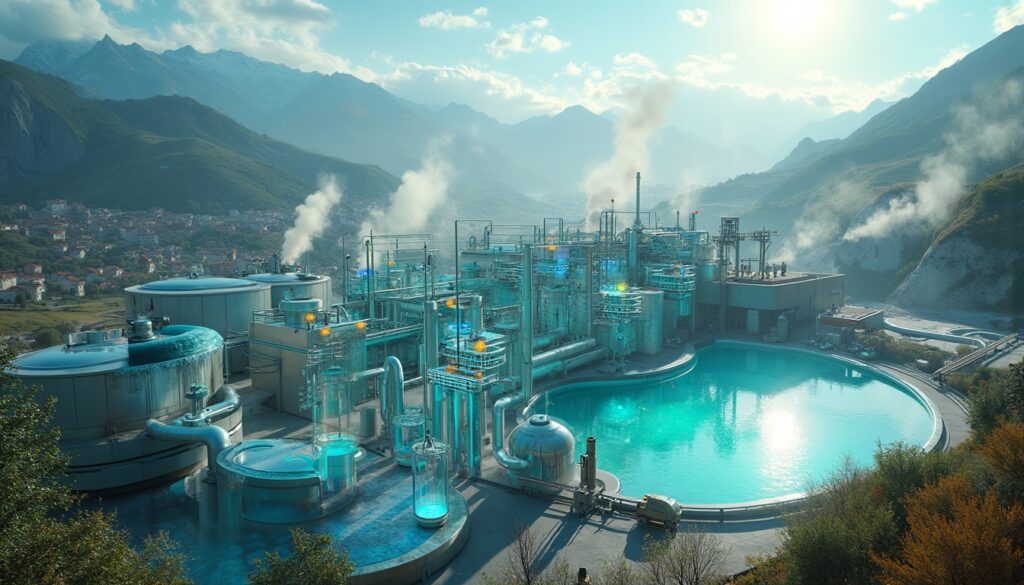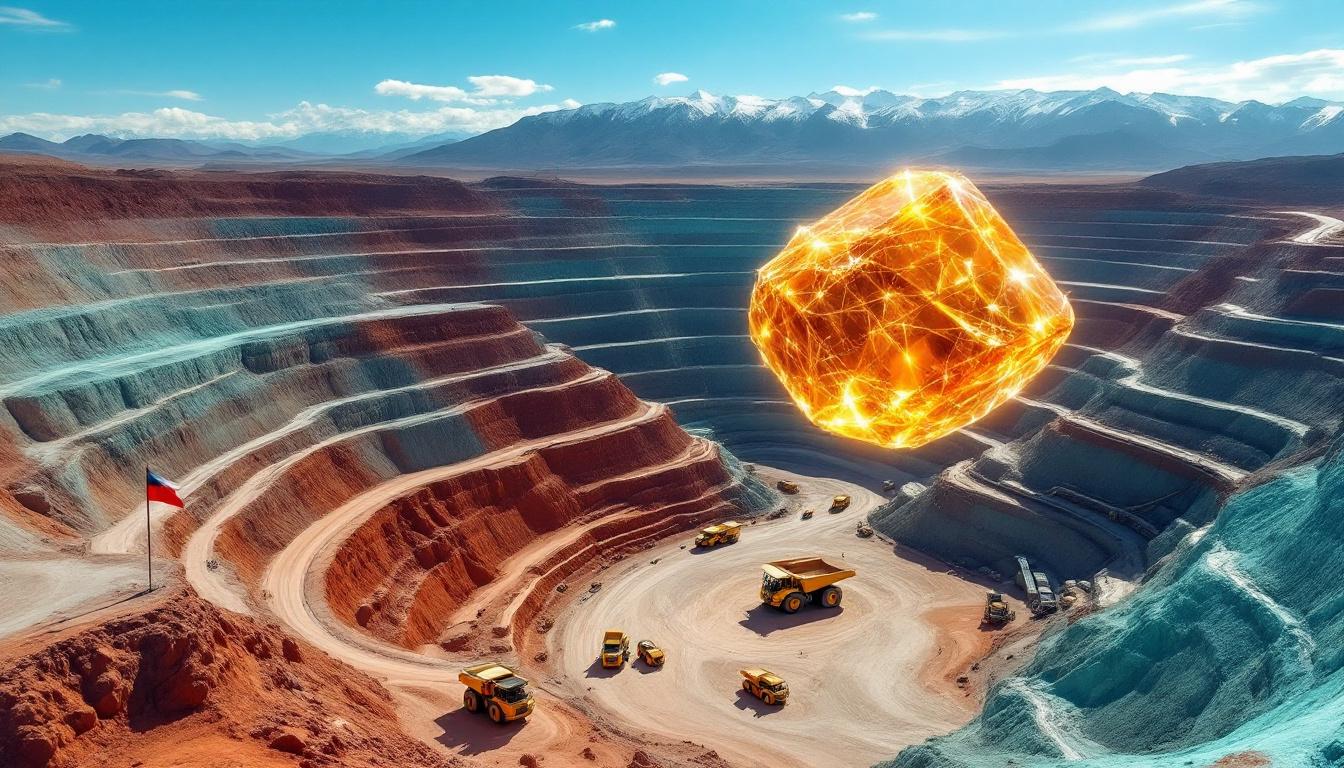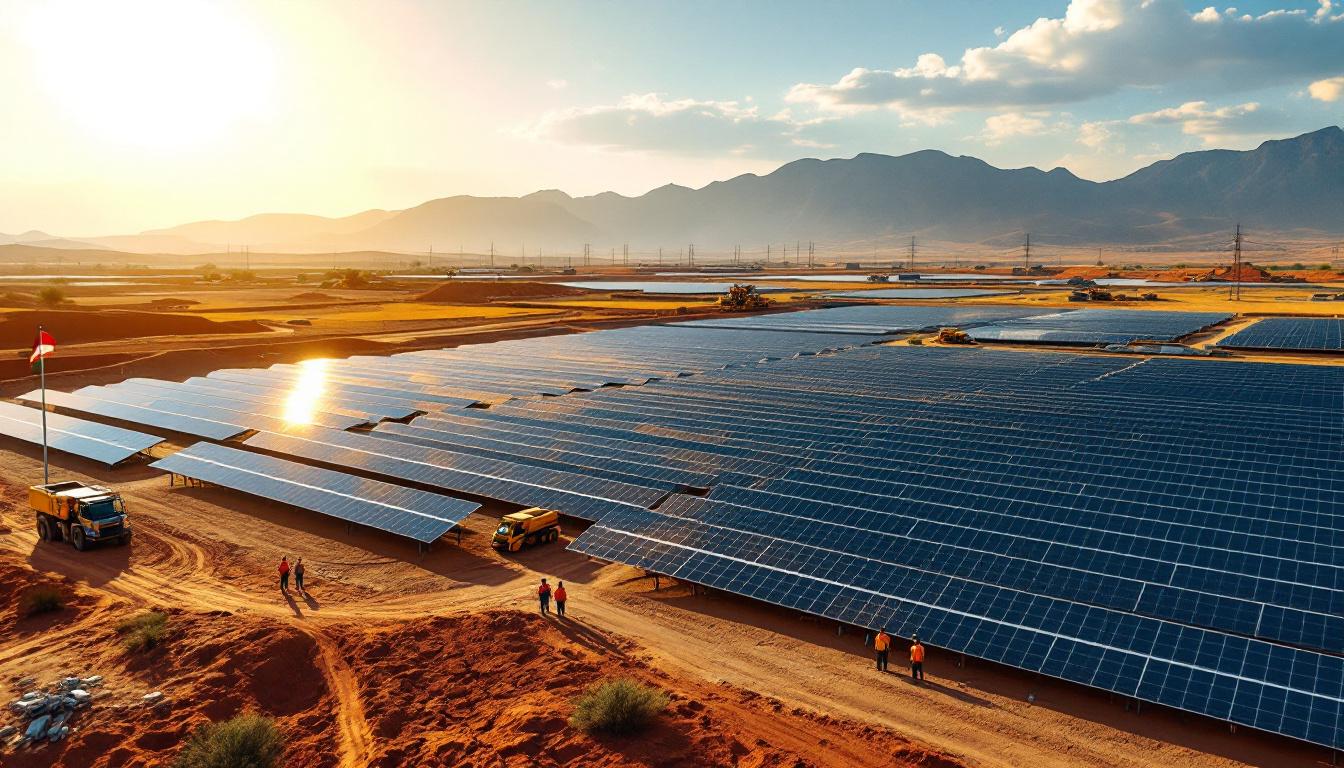Lithium extraction from geothermal brine Italy has emerged as a cutting-edge solution to secure essential battery metals while minimising environmental impact. This innovative process taps naturally occurring hot water reservoirs and uses advanced methods, as seen in innovative lithium production, to separate lithium ions from the complex mix of minerals.
The process involves pumping rich geothermal fluids from deep underground to the surface. Once brought to the surface, specialised extraction techniques isolate lithium while the remaining water is reinjected into the ground. This closed-loop system preserves water resources and land integrity, helping to create a sustainable resource cycle in Italy.
Altamin and Watercycle Technologies are at the forefront in Italy. Their collaborative work harnesses the potential of lithium extraction from geothermal brine Italy, which is drawing increasing global attention as energy demands and sustainable practices intertwine.
How Does the Collaboration Work?
The Altamin-Watercycle Technologies partnership is a fusion of geological insight and modern extraction methods. Announced in February 2023, the collaboration assesses lithium extraction capabilities from geothermal brines on Altamin’s Italian licences. This project reflects a growing trend in pioneering extraction process that rethinks traditional methods.
Watercycle Technologies provides proprietary membrane technology that selectively extracts lithium ions from the complex mix of brine ingredients. Their membranes precisely target lithium while minimising interference from other dissolved elements. Altamin contributes extensive geological expertise from Italian mineral deposits and long-standing knowledge of local geothermal fields.
Dr Seb Leaper, CEO of Watercycle Technologies, stated,
"Each test validates our membranes and helps tailor the process to the specific chemistry at each site."
This systematic testing across Italy is proving crucial for optimising extraction processes.
Why is Italy Becoming a Hub for Geothermal Lithium?
Italy’s unique geological and geopolitical position makes it ideal for lithium extraction from geothermal brine Italy. The country lies along tectonic boundaries that generate abundant geothermal activity. Regions such as Tuscany, Lazio, and central Italy benefit from high-temperature fields that are not only used for power generation but also for innovative lithium extraction projects.
The Larderello field in Tuscany, the site of the world’s first geothermal power station, now plays an additional role. Its established infrastructure provides an advantage for lithium projects to integrate with existing power platforms. These longstanding sites now support advanced extraction meant for future battery production.
Italy’s membership in the European Union adds further strategic relevance. With the EU’s focus on reducing reliance on imported battery materials, domestic lithium production is vital. Investors and policy makers see tremendous potential in projects like those harnessing geothermal brine Italy resources to enhance energy security on the continent.
Additionally, comprehensive government support has streamlined exploration and development permits. This regulatory clarity is one of the driving forces behind Italy’s emergence as a key player in prospective lithium markets.
What are Geothermal Brines and Their Lithium Potential?
Geothermal brines are mineral-rich fluids found deep underground. These high-temperature solutions circulate through fractured rock, accumulating valuable dissolved minerals, including lithium. Italian brines typically contain lithium concentrations between 100 and 350 mg/L, which is significant compared to many traditional salars.
Several attractive aspects make these brines renewable. After extraction, the water is returned underground, where it is reheated and re-enriched with minerals. This cyclical process creates a nearly perpetual resource base. In this context, the Altamin-Watercycle Technologies project is a leader in harnessing geothermal brine Italy potential.
Each geothermal field has its unique signature. Dr Leaper explains,
"Different brines present different challenges based on their chemical makeup."
This variability has led to customised extraction techniques designed for each site’s specific composition. Early tests in areas like Cesano suggest that commercial viability may soon be achievable.
For a more detailed technical insight, one report highlights the efficiency of these systems in continuously processing brine. In fact, novel lithium technology has shown promising results in similar projects.
How Does Membrane Technology Revolutionise Extraction?
Watercycle's proprietary ion-selective membranes mark a significant departure from traditional extraction methods. Unlike the lengthy evaporation processes of conventional methods, these membranes exploit advanced materials science to create pores that allow only lithium ions to pass.
The procedure is not only efficient but also rapid. In contrast to solar evaporation which takes many months, membrane-based extraction operates continuously, reducing production timelines to a matter of hours. This efficiency lowers capital expenditure and improves extraction rates.
During membrane passage, ions are separated with precision. The membranes maintain their selectivity despite high temperatures and interfering elements such as magnesium and calcium. This capability is critical given that some geothermal brines contain magnesium-to-lithium ratios exceeding 10:1.
The technology also boasts excellent recovery rates. According to Dr Leaper, laboratory tests have achieved recovery levels above 90%. This performance enables the membranes to be integrated with existing geothermal power plants for both energy and mineral recovery benefits.
What Are the Environmental Benefits?
Geothermal lithium extraction from geothermal brine Italy is acclaimed for its low environmental impact. Traditional methods, relying on open-pit mining or vast evaporation ponds, carry heavy ecological footprints. In contrast, geothermal extraction recycles water and leverages renewable energy.
The closed-loop design is key; reinjected brine undergoes reheating, minimising water usage by as much as 80% compared to conventional extraction. Additionally, when paired with geothermal power plants, the process achieves near carbon neutrality—an essential quality in today’s eco-conscious energy landscape.
Land disturbance is also reduced. Whereas solar evaporation can require hundreds of hectares, a geothermal plant occupies only a few. These benefits are reinforced by research indicating lower operational costs and superior resource efficiency.
Key environmental benefits include:
- Reduced water consumption
- Lower carbon emissions
- Minimal land usage
These factors underscore the sustainable aspects of geothermal lithium extraction as a forward-thinking resource strategy.
What is the Strategic Importance for the EU?
Developing domestic lithium operations is a strategic priority for the European Union. With ambitious climate targets and a steady shift away from combustion-engine vehicles, local production of battery metals is vital. Diverse projects, including geothermal extraction from geothermal brine Italy, are paving the way for supply chain resilience.
Europe currently relies heavily on imports, making it vulnerable to supply disruptions. By securing domestic lithium sources, the EU can reduce geopolitical risks and ensure a steady supply for its automotive and renewable energy sectors. The long-term forecast indicates demand could grow exponentially, making local projects not just beneficial but necessary.
The strategic energy framework supports such initiatives. Under policies like the Critical Raw Materials Act and the European Battery Alliance, projects that tap local geothermal resources bolster both economic stability and industrial innovation. This planning is at the heart of mining's key role within the clean energy transition.
How Far Has Altamin Progressed?
Altamin has marked significant achievements in developing its Italian projects. The company secured two exploration licences in 2022 over promising geothermal fields known for their lithium potential. In the Lazio region specifically, the project area expanded by an impressive 500%, capturing broader swathes of high-potential brine sites.
Data compilation from previous exploration has merged decades-old geological records with modern testing methods. This has positioned Altamin well to identify and test the most promising sites for lithium extraction. The ongoing pilot programme will soon apply Watercycle’s membrane technology to optimise the extraction specific to Italian geothermal brine Italy.
The collaboration is further highlighted by industry news. An external report on geothermal test project detailed the partnership progress and goals for meting commercial success.
In addition to lithium, Altamin is diversifying its portfolio by advancing polymetallic projects. Projects such as their Gorno Zinc Project demonstrate robust resource quality, securing grades that indicate significant potential for investment and future development.
How Do Extraction Methods Compare?
When comparing geothermal lithium extraction to conventional methods, distinct benefits emerge. Traditional techniques rely on hard-rock mining or extensive evaporation processes. These methods are not only resource-intensive but also environmentally burdensome.
Geothermal extraction utilises natural hot water circulation to bypass the need for disruptive mining. Analytical comparisons show that geothermal plants typically require 50-70% lower capital expenditure than hard-rock mines. They also markedly reduce water consumption versus solar evaporation methods that use up to 500,000 litres per tonne of product.
The process yields high-purity lithium, suitable for battery-grade applications with reduced need for further refining. This contrasts sharply with conventional methods, where additional processing is often necessary to meet quality standards. The combination of economic savings and environmental sustainability positions geothermal lithium extraction as a viable alternative in the long term.
What Technical Challenges Persist?
Despite its promise, lithium extraction from geothermal brine Italy faces technical challenges. Interfering elements like magnesium and calcium complicate the separation process. High operating temperatures also stress conventional materials, requiring specialised designs capable of withstanding extreme conditions.
Scaling and corrosion from silica and sulphates further add to the operational difficulties. These issues demand continuous research to optimise membrane selectivity and durability. According to Dr Leaper, each geothermal brine’s chemistry varies considerably, necessitating customised solutions rather than one-size-fits-all systems.
Ongoing field tests and pilot projects are addressing these hurdles, with collaboration between industry experts accelerating technological advances. Overcoming these challenges is pivotal for scaling production to meet future European demands.
Summary Points
- Geothermal lithium extraction uses natural hot water reservoirs, reducing environmental impact.
- Italy’s geological setting supports high-temperature brine production and renewable energy use.
- Innovative membrane technology accelerates extraction and lowers costs compared to traditional methods.
- Strategic EU policies drive investments in domestic battery metal sources.
This comprehensive approach to lithium extraction from geothermal brine Italy is reshaping traditional mining. As technological and policy frameworks align, the potential for sustainable, efficient resource extraction looks promising for both the energy sector and environmental conservation.
Ready to Discover the Next Major Resource Opportunity?
Don't miss out on real-time alerts for significant mineral discoveries like innovative lithium extraction projects in Italy – Discovery Alert's proprietary Discovery IQ model instantly identifies high-potential opportunities across the ASX. Visit https://discoveryalert.com.au/news/discoveries/ to see how historic discoveries have generated substantial returns for early investors.




